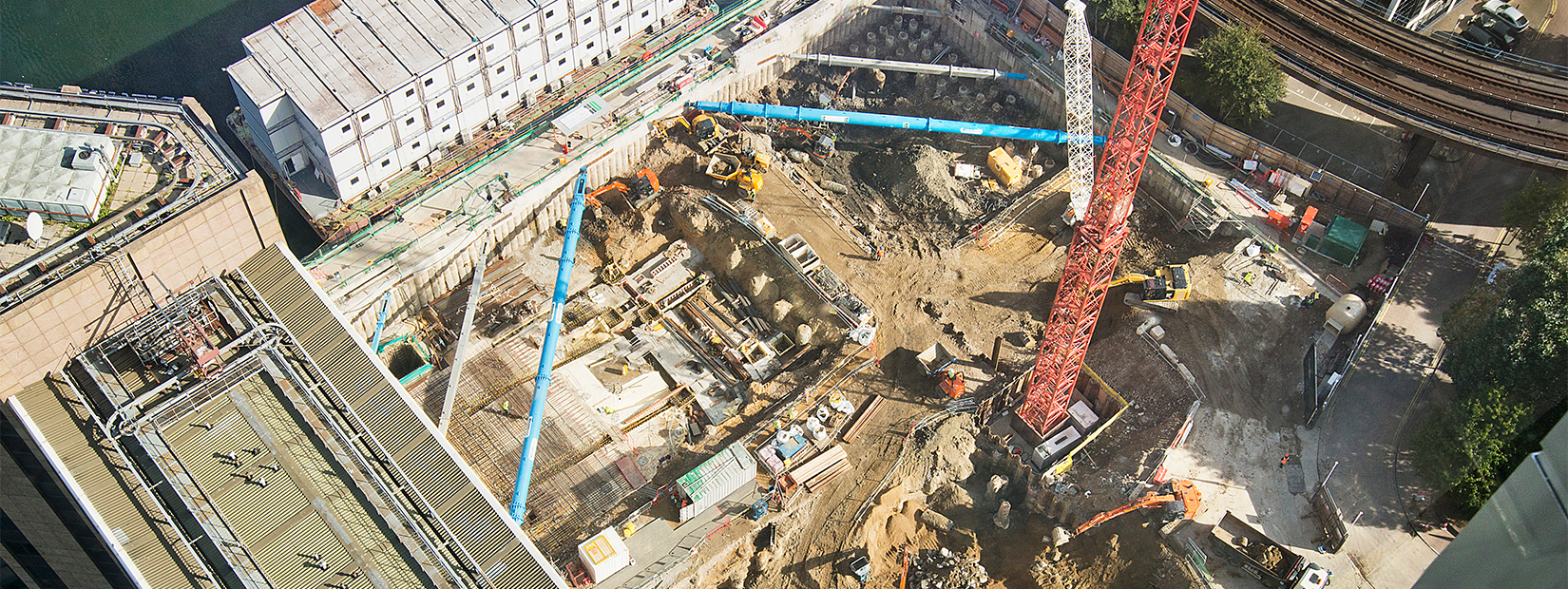Excavation support systems are an important part of any groundworks project, but with these jobs covering many different areas, it can be challenging to know what solution fits your needs. In this blog, we will discuss the different types of excavation support solutions, what they’re used for and why. So, read on for more…
When looking at construction projects, excavations are a common part of the process, whether for access to underground utilities or building foundations for a larger structure. Ground excavations are far more complex than simply digging a hole, with extensive planning going into ensuring the works are conducted correctly and safely.
Excavation Support Systems
In its simplest form, an excavation involves the moving and removal of soil and dirt from an area where construction is going to take place, whether achieved through drilling, grading or trenching. Projects will often involve the use of heavy machinery, such as bulldozers and excavators.
As a result of this removal of material, the trench or excavation can often become unsafe and unstable, with the potential for surrounding dirt and soil to collapse in on the space. With this in mind, excavation support systems are a critical piece of equipment, working to shore up the excavated space and help protect site teams from harm.
When Should an Excavation be Supported?
For many years, the Construction (Working Places) Regulations 1966 had specified that only a trench or excavation which exceeded a depth of 1.2 metres should have a shoring system in place. However, this has since been over-ruled, deemed to be too specific and restrictive. Instead, the Health and Safety Executive (HSE) affirms that the need to use trench shoring depends instead on ground conditions and other factors, whether that be the soil type, weather conditions, proximity to other infrastructure or distance from plants and other construction works. The HSE has also advised that each excavation project has a temporary works engineer on site to provide insight into this.
In addition, excavation sites should be inspected regularly – at least once a day when people are at work – to ensure there have been no changes that could affect the stability of the trench walls. Factors to look out for include cracks, spoil heaps near or close to the excavation, nearby equipment or materials, or standing water on site – all of which can add extra loads onto the trench walls.
The consequences of an incorrectly supported excavation can be severe, with one cubic metre of soil weighing up to 1.5 tonnes. With accidents able to happen in trenches as shallow as 0.5m, a collapse can cause serious injuries, such as broken bones or in the worst-case, death. For this reason, contractors should always consider the dangers posed by their particular excavation project and consult a temporary works engineer before proceeding with any works.
Types of Excavation Support Systems
There are a wide variety of excavation supports available, accounting for the numerous applications and requirements you can encounter on site. There are also both temporary and permanent support solutions, with temporary excavation support systems being removed upon completion of the works, while permanent solutions remain in place. Because of this, permanent solutions are often manufactured from components which incorporate protection against long-term corrosion, as the solution may be exposed to prolonged moisture or soil contact.
The types of excavation support available for temporary projects are explored in more detail below…
Trench Sheets
As the name suggests, Trench sheets provide support to the sides of trenches, creating a sheet pile wall that securely holds trench faces during construction. For larger excavations, steel sheet piles can offer greater strength and water tightness.
Trench Boxes
Similar to Trench Sheets, Trench Boxes support the trench face but are quicker to assemble, without the need for additional shoring equipment. Highly adaptable, trench boxes can be adjusted on site to fit the needs of the job, making them perfect for the utilities industry, when using shallow trenches to repair pipework or other services.
Walers
Aluminium Walers are lightweight and designed to provide 2-way support to small trenches, when used in conjunction with trench sheets. Often quick and easy to install, walers are ideal when installing or working around utilities and existing services, where trench boxes may not always be suitable.
Bracing Frames
Bracing frames provide support for sheeted excavations, with the capability to support clear spans of up to 25 metres. They are essential for deep excavations with vertical faces and are often available in steel or aluminium, mechanical, or as a hydraulic bracing system.
Bracing Struts
Bracing struts provide support for braced excavations by propping the vertical faces in place together, in conjunction with excavation bracing frames. With capacity ranging from low-load shallow trenches up to extremely high-load basement excavations, bracing struts are used as intermediate supports allowing you to indefinitely extend the length of the excavation. With a range of end fixtures, excavation bracing struts can be used to prop permanent concrete structures, such as diaphragm walls and capping beams.
Excavation Support Solutions for Hire?
As a leading UK provider of temporary works support solutions, we pride ourselves on having a wide range of equipment for all applications. Not only this, but our expert teams are well placed to provide you with the help and technical support required, able to design temporary works schemes for your next job.
So, if you’re looking to carry out an excavation and need the support of a dedicated temporary works specialist, why not contact a member of our team.
